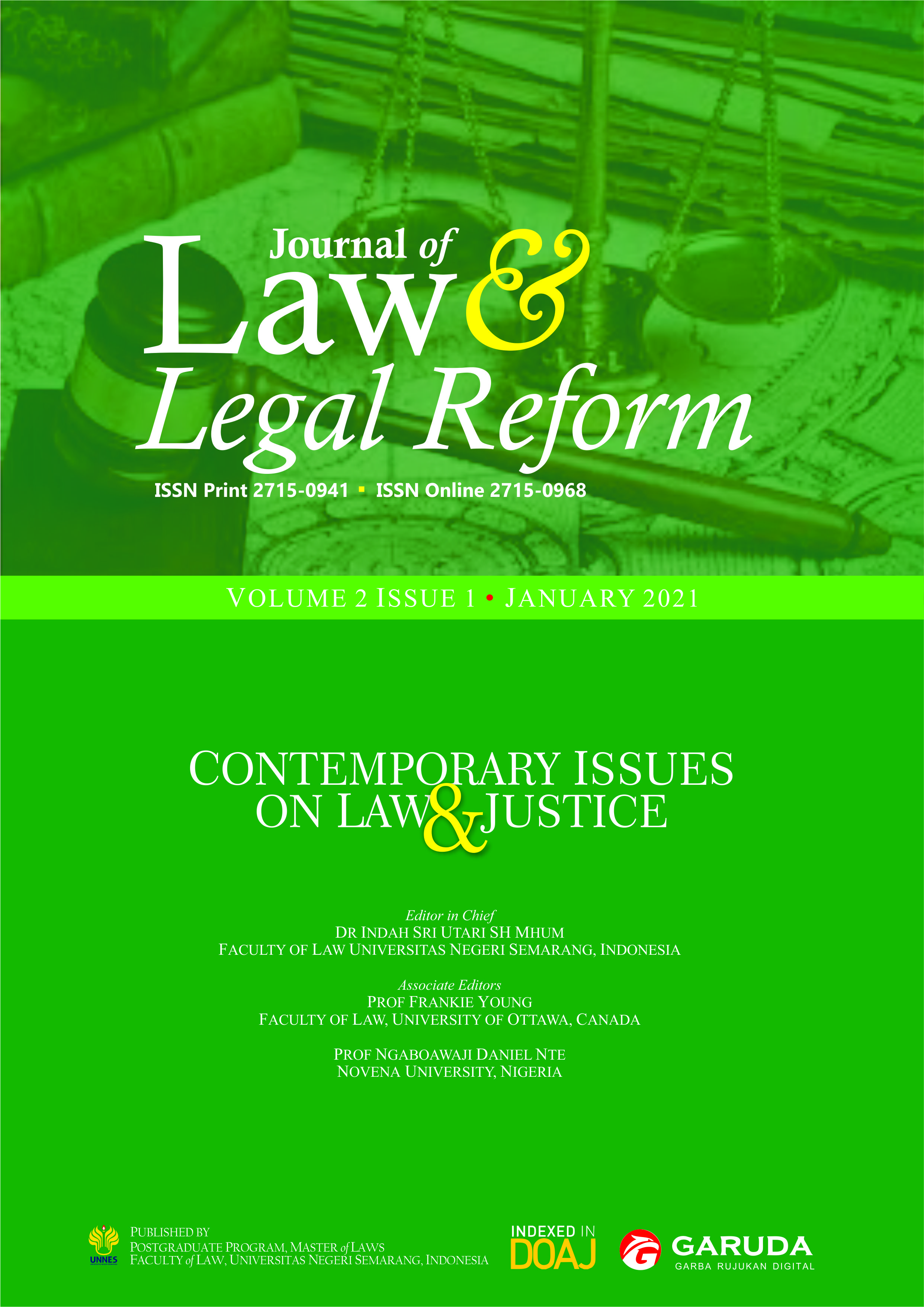The Policy of Employment Information System Development in Bali Province in the Era of Industrial Revolution 4.0
Main Article Content
Abstract
The era of Industrial Revolution 4.0 encourages the implementation of information technology-based government in various fields including in the field of manpower. The Regional Government of Bali Province has a legal product in the form of the Bali Provincial Regulation Number 10 of 2019 concerning Manpower Implementation mandating the development of a labor system. In this study, two issues will be discussed, namely the basic considerations for the development of an employment information system and the formulation of a law regarding an employment information system. The development of a manpower information system is based on the government's duties in providing public services and regional autonomy. The legal formulation regarding the manpower information system is written in the form of a regional regulation which should also be followed by a governor's regulation.
Article Details
All writings published in this journal are personal views of the authors and do not represent the views of this journal and the author's affiliated institutions. Author(s) retain copyrights under a Creative Commons Attribution-NonCommercial-ShareAlike 4.0 International (CC BY-NC-SA 4.0).
References
Azhar, A. (2000). Sistem Informasi Manajemen Konsep dan Pengembangannya. Yogyakarta: Penerbit Andi.
BPS (Badan Pusat Statistik Republik Indonesia). (February 2020). “Tingkat Pengangguran Terbuka (TPT) sebesar 4,99 persen†retrieved from, https://www.bps.go.id/pressrelease/2020/05/05/1672/februari-2020--tingkat-pengangguran-terbuka--tpt--sebesar-4-99-persen.html
Dirjen Peraturan Perundang-undangan. (2008) Panduan Praktis Memahami Perancangan Peraturan Daerah. Jakarta: Penerbit Caplet Project.
Djamali, R.A., (2001) Pengantar Hukum Indonesia. Jakarta: PT Raja Grafindo Persada.
Herlambang, P. (2018). Implementation on Transfer of Undertaking Protection of Employment to Outsourcing Labors in Semarang Indonesia: A Legal Approach. JILS (Journal of Indonesian Legal Studies), 3(1), 109-130. https://doi.org/10.15294/jils.v3i01.23211
Hoessien, B. (2009) Perubahan Model, Pola, dan Bentuk Pemerintahan Daerah (dari Era Orde baru ke Era Reformasi). Depok: Departemen Ilmu Administrasi FISIP Universitas Indonesia.
Manan, B. (1994). Hubungan Antara Pusat dan Daerah Menurut UUD 1945, Sinar Jakarta: Harapan.
McLeod, R. (2004) Sistem Informasi Manajemen. Jakarta: Indeks.
Moekijat, M. (2019) Pengantar Sistem Informasi Manajemen. Bandung: Remaja Rosdakarya.
Nasution, B. J. (2006). Tinjauan Tentang Ruang Lingkup dan Alat Ukur Tindak Pemerintahan yang Baik. Jurnal Demokrasi, 5(2), 123-128. http://ejournal.unp.ac.id/index.php/jd/article/view/1079/914
Ndun, I., Helan, Y. G. T., & Pekuwali, U. L. (2020). The Absolute Competence of the Industrial Relations Court in Resolving Employment Termination Disputes. JILS (Journal of Indonesian Legal Studies), 5(1), 29-52. https://doi.org/10.15294/jils.v5i1.33159
Rahardjo, S. (1980) Hukum dan Masyarakat. Bandung: Angkasa.
Salam, D. S. (2004) Otonomi Daerah dalam perspektif lingkungan, Nilai dan Sumber Daya. Jakarta: Djambatan.
Satya, V. E. (2018). Strategi Indonesia Menghadapi Industri 4.0. Info Singkat 10(9), 19-24.
Setiono, B. A. (2019). Peningkatan Daya Saing Sumber Daya Manusia Dalam Menghadapi Revolusi Industri 4.0. Jurnal Aplikasi Pelayaran dan Kepelabuhanan, 9(2), 179-185. http://pdp-journal.hangtuah.ac.id/index.php/japk/article/view/67/66
Sumarto, H. S. (2004) Inovasi Partisipasi dan Good Governance. Jakarta: Yayasan Obor Indonesia.
Warassih, E. (2005) Pranata Hukum, Sebuah Telaah Sosiologis. Semarang: Suryandaru Utama.
